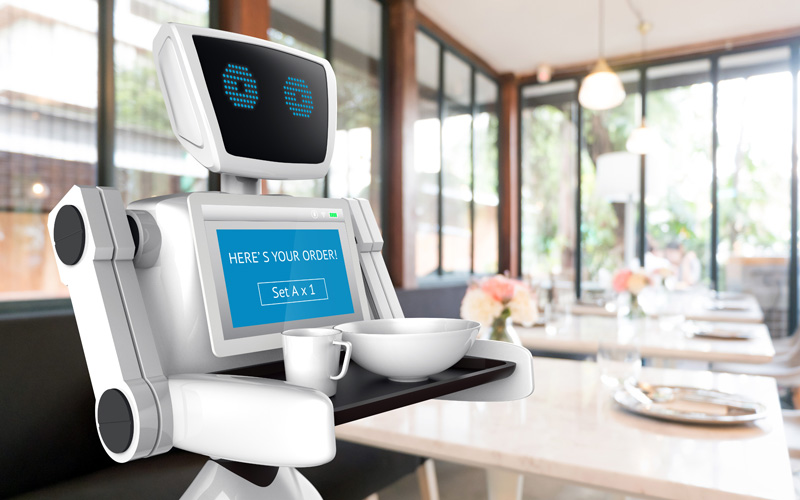Robots that flip your burgers? Pizza delivery by drone? Self-serve kiosks that recognize your face and ask “the usual, madam?” the moment you walk up to them?
If this all strikes you as more fantasy than a realistic vision of the future of the restaurant trade, consider this – all of the above ideas have already been trialled, and by some of the biggest names in the industry, too.
Artificial intelligence (AI) has a huge amount of potential in every sector of the economy, hospitality included. While it’s easy to get side-tracked by gimmicky ideas like kitchen robots and AMRs (autonomous mobile robots) serving meals, it’s important to remember that AI is fundamentally about something much bigger – using digital data to automate processes and decision-making intelligently and in ways that drive value.
In the restaurant industry, AI-powered tools are becoming more and more commonplace in POS solutions. It has the potential to create new efficiencies, improve the customer experience and drive-up sales, all by using available data to provide diners more of what they want, when they want it. But what exactly is this likely to look like in the coming years as AI adoption gathers pace?
Ordering via Smart Assistants
45% of Millennials in the US say they have used a voice assistant like Amazon Alexa or Google Home to make a purchase. Naturally, if people want to shop using an AI that means they don’t even have to bother looking at a screen, they will jump at the chance to order a meal the same way.
Big names like Denny’s and Dunkin Donuts already let customers place orders for delivery or collection from smart assistants. But there’s no reason why telling an AI what you want to order by talking to it shouldn’t become commonplace in the restaurant, either. Enabling voice ordering at a self-service kiosk would be another way to make the experience streamlined and ultra-efficient. And it’s not beyond the realms of possibility that diners could one day speak their orders to an on-table AI, rather than wait for a member of staff to serve them.
Optimized dining experiences
Your restaurant POS system already contains a lot of data. Imagine being able to dive into it and pull out intelligence about what really keeps your customers happy, or at least gets them spending most on their meals. Is it particular dishes on the specials board, or promotions you run? Is it menu availability? Do people spend more when they order from a member of staff with a pen and paper or a mobile POS tablet in hand, or when they use a self-serve kiosk? Do seating plans influence their behavior?
AI is already sophisticated enough to expose the previously invisible patterns in what influences diners to spend or otherwise. Swedish company Livt, for example, designs restaurants using AI to measure the impact of everything from turning the music up a few notches to the impact of moving the seating around on different days. With AI able to measure anything and everything, restaurateurs can get creative and start to approach creating the ideal customer experience for their clientele in a scientific way.
Personalized service
Finally, what better says to a diner ‘you matter to us’ than remembering their favorite meal, their drink of choice, and making perfect recommendations based on their personal tastes? It’s a skill that experienced bartenders and baristas in high-quality establishments cultivate as a badge of honor. But with the best will in the world, AIs have a better memory than people.
So the kiosk that uses face recognition technology to enquire if madam would like the usual is probably not all that far-fetched – it is simply the natural progression of a process that is already well in motion. With AI technology being used to make personalized cross-sell recommendations and the aggregator app Halla even suggesting which establishments to order from based on a customer’s ‘taste profile’, we are already seeing a glimpse of the future.




